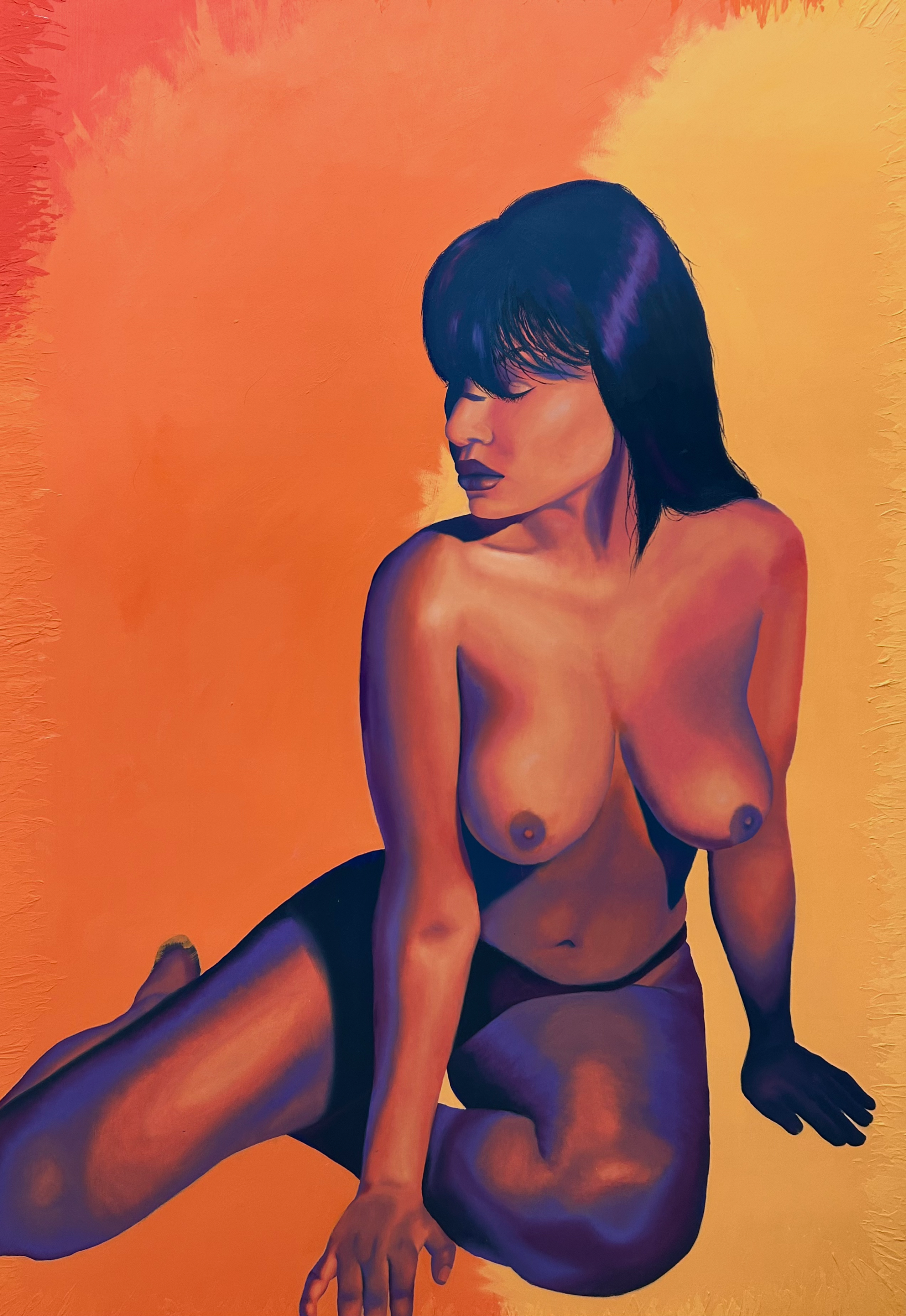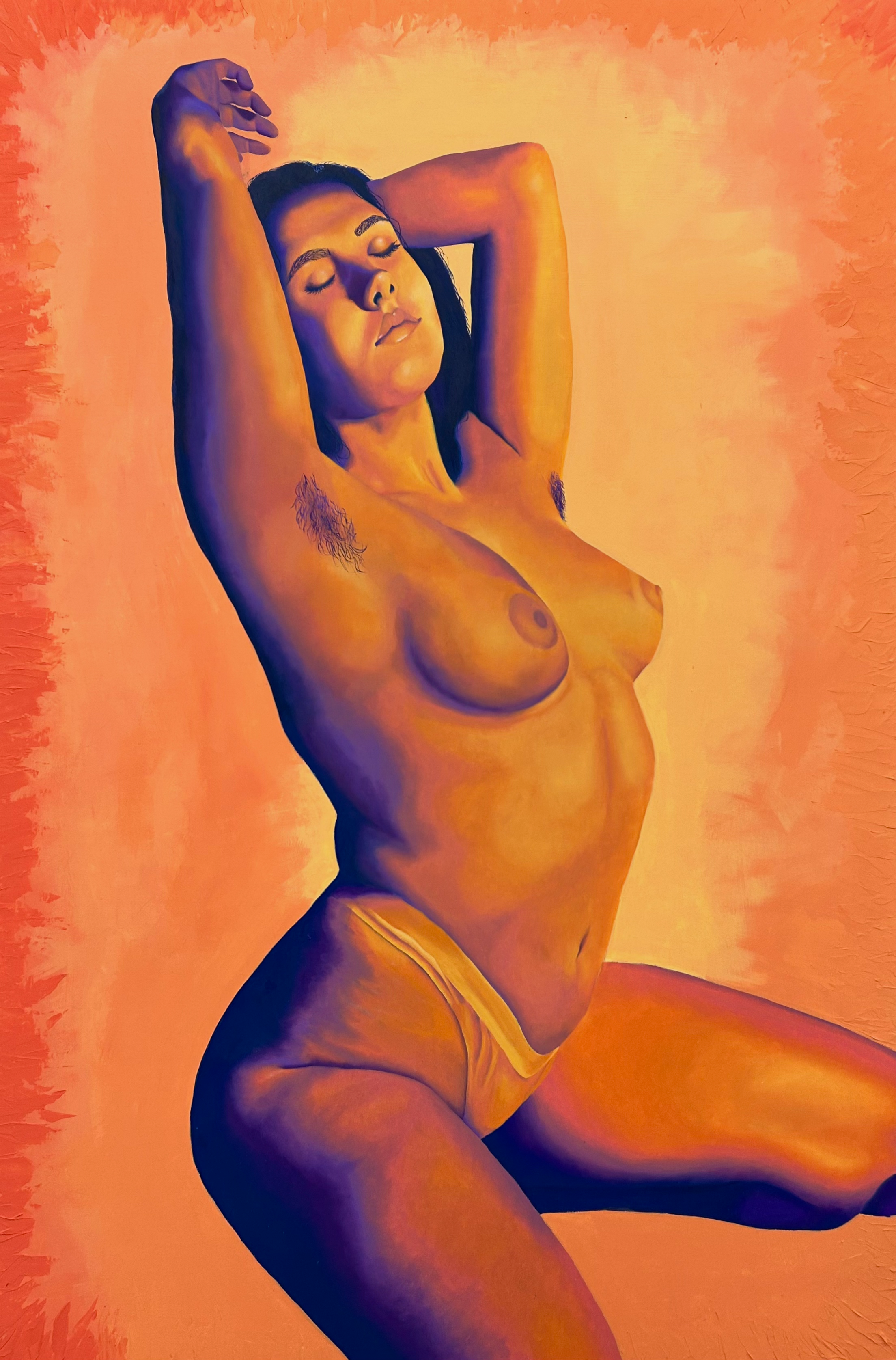Artist Biography
I have always created art, and for as long as I can remember I have yearned to create art of all kinds. Growing up, my house was always bursting with creativity; with my mom crafting, my brothers playing instruments, and my dad being an artist in his free time. The environment fostered my love for art and let my imagination flourish. I am a multifaceted artist with a love for portraiture and still life work. As an art therapy major my passion for helping people be empowered and gain a sense of self- identification comes through in my visual work. My preferred medium is oil paint, but I also partake in acrylics, crochet, sewing, embroidery, and other mixed media. My current body of work, titled “Power of Femininity,” shows three large-scale oil on wood panels portraying evocative female-identifying people in boudoir poses. Each painting is created using its own specific color palette, related to the energy of each of the models, identified by the relationship I had with each person. One of the paintings was created in warm tones, the other cool, and the third a mixture of warm and cool. The female poses are delicate and innately feminine but the backgrounds of each of the paintings show the lightest color of each palette faded into a darker color of the palette. The delicate poses and powerful sizes put the viewer on the line and force them to consider their relationship to female power, strength, and vulnerability.
Thesis Abstract
This thesis discusses how art and feminist art therapy can help empower and promote the representation of female-identifying women. Feminism is an approach and belief system that considers intersectionality and equality for all people including; disability, age, culture, ethnicity, race, gender, and socioeconomics. Feminism is a movement seen in art, science, and literature. Feminist art therapists focus on a gender-aware practice toward social change and social justice. To investigate this topic, three college-age female identifying models were recruited and photographed to participate in portrait painting on the topic of female-identifying empowerment. The participants signed a model release form and were photographed in a private photo studio. They wore only undergarments of their choosing and were asked to pose in what they felt was comfortable and most confident to them at that moment. In result, three large-scale oil on wood paintings of female figures were created with limited color palettes. The colors included yellows, purples, blues, and oranges. A sunburst-style background was painted on each panel using the lightest tones from each palette. Photographs of each painting were shared with the respective model during the painting process. The sharing promoted positive feedback and empowered remarks from the models. The large scale of the paintings promotes the visibility of the female figure in a larger-than-life format; taking up space while showing a sense of vulnerability. The scale also forces the viewer to consider their own relationship to female power, strength, and vulnerability. Art therapists may consider how female-identifying portraiture may promote identity, empowerment, and self-love. Limitations and future directions for this research are discussed.



